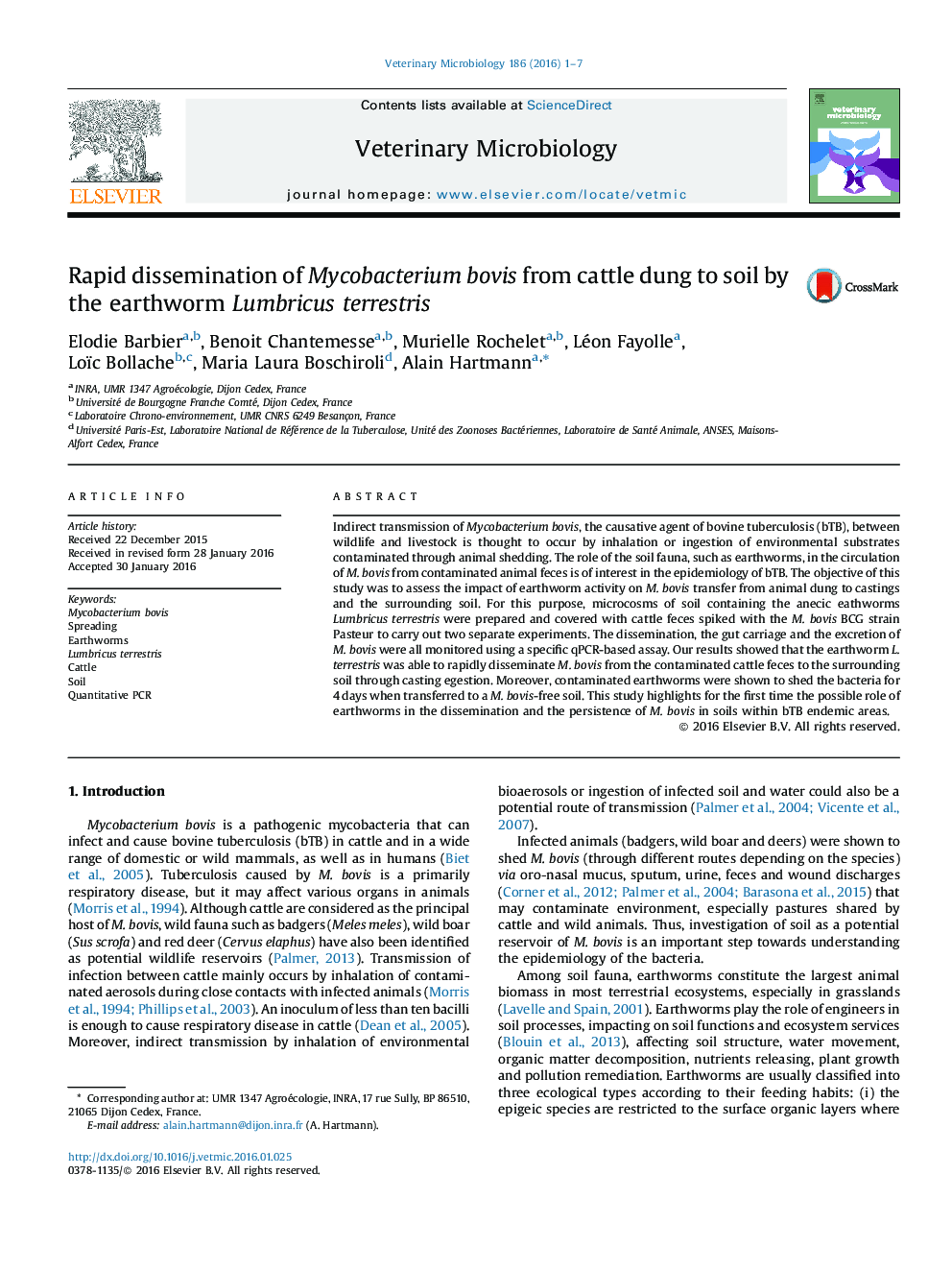| Article ID | Journal | Published Year | Pages | File Type |
|---|---|---|---|---|
| 5799690 | Veterinary Microbiology | 2016 | 7 Pages |
â¢The earthworm Lumbricus terrestris is able to disseminate M. bovis in soil by feeding from contaminated cattle dung.â¢Dissemination of M. bovis occurs through soil burrowing and casting deposition.â¢Gut carriage of M. bovis by contaminated earthworms occurs at least during a 4-days period following transfer of the worms in uncontaminated soil.
Indirect transmission of Mycobacterium bovis, the causative agent of bovine tuberculosis (bTB), between wildlife and livestock is thought to occur by inhalation or ingestion of environmental substrates contaminated through animal shedding. The role of the soil fauna, such as earthworms, in the circulation of M. bovis from contaminated animal feces is of interest in the epidemiology of bTB. The objective of this study was to assess the impact of earthworm activity on M. bovis transfer from animal dung to castings and the surrounding soil. For this purpose, microcosms of soil containing the anecic eathworms Lumbricus terrestris were prepared and covered with cattle feces spiked with the M. bovis BCG strain Pasteur to carry out two separate experiments. The dissemination, the gut carriage and the excretion of M. bovis were all monitored using a specific qPCR-based assay. Our results showed that the earthworm L. terrestris was able to rapidly disseminate M. bovis from the contaminated cattle feces to the surrounding soil through casting egestion. Moreover, contaminated earthworms were shown to shed the bacteria for 4Â days when transferred to a M. bovis-free soil. This study highlights for the first time the possible role of earthworms in the dissemination and the persistence of M. bovis in soils within bTB endemic areas.
